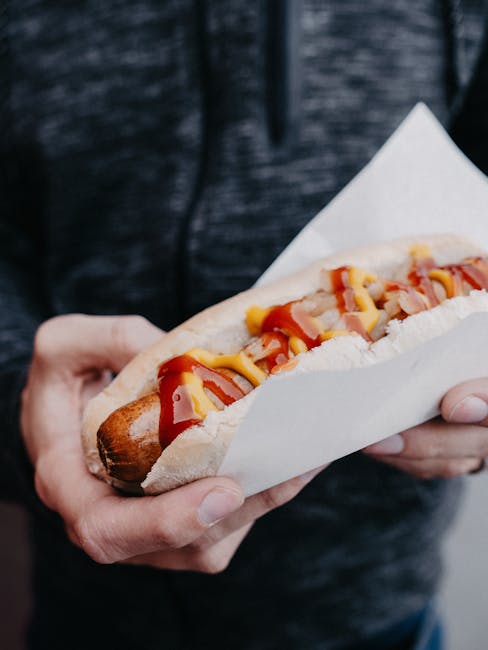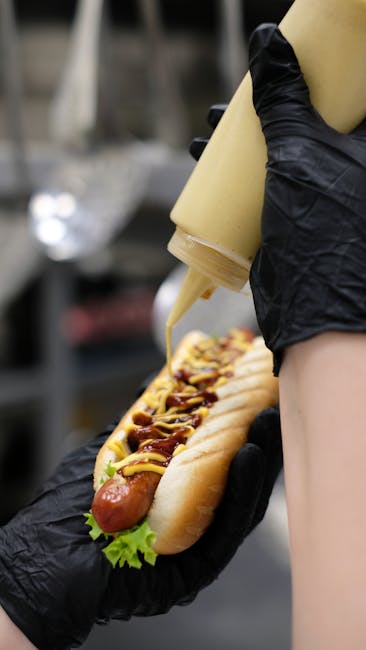How to Defrost Sausage Quickly: Safe & Effective Methods for Every Situation
Need sausage for dinner tonight but forgot to take it out of the freezer? Don’t panic! While slow thawing is the safest method, there are several quick and effective ways to defrost sausage without compromising food safety. This comprehensive guide will walk you through various techniques, highlighting their pros, cons, and crucial safety considerations to help you choose the best method for your circumstances.

Understanding Food Safety During Sausage Defrosting
The most important factor when defrosting any meat, including sausage, is preventing the growth of harmful bacteria. Bacteria thrive in the ‘danger zone,’ a temperature range between 40°F (4°C) and 140°F (60°C). Prolonged exposure to this temperature range significantly increases the risk of foodborne illness. Therefore, speed and safety should always go hand-in-hand when defrosting.
The Dangers of Improper Defrosting
Improper defrosting can lead to serious consequences, including:
- Foodborne illness: Bacteria like Salmonella and E. coli can multiply rapidly in improperly defrosted meat, causing nausea, vomiting, diarrhea, and fever.
- Spoilage: Thawing sausage at room temperature for too long can lead to spoilage, making it unsafe and unappetizing to eat.
- Uneven cooking: Quickly defrosted sausage might be unevenly cooked, leading to potential food safety hazards in some areas.
Quick Defrosting Methods: A Detailed Guide
1. Cold Water Defrosting: The Safe and Relatively Speedy Option
This method involves submerging the sausage in cold water, changing the water every 30 minutes to maintain a consistently low temperature. This is a relatively quick method, considerably faster than defrosting in the refrigerator but significantly safer than room temperature defrosting.
- Place the sausage in a leak-proof plastic bag.
- Submerge the bag in a bowl or sink filled with cold water.
- Change the water every 30 minutes to ensure it remains cold.
- A one-pound package of sausage can typically defrost in about 1-2 hours using this method.
- Cook the sausage immediately after defrosting.
2. Microwave Defrosting: The Fastest, But Riskiest, Method
Microwave defrosting is the quickest option but requires careful attention to prevent uneven cooking and the potential for bacterial growth. Always use the defrost setting and monitor the sausage closely to avoid overheating.
- Place the sausage on a microwave-safe plate.
- Use the microwave’s defrost setting.
- Turn the sausage over halfway through to ensure even thawing.
- Monitor the sausage closely and stop defrosting when it is mostly thawed but still slightly frozen in the center. You can cook the rest of the way through by sautéing or grilling.
- Cook the sausage immediately after defrosting. This is crucial as microwaving will partially heat the sausage creating a favorable environment for bacteria growth.
3. Defrosting in the Refrigerator: The Slowest, But Safest, Method
While not a ‘quick’ method, refrigerator defrosting is the safest. It takes significantly longer but minimizes the risk of bacterial growth.

- Place the sausage on a plate or in a container in the refrigerator.
- Allow at least 24 hours for a one-pound package to fully defrost.
- Larger packages may require longer defrosting times.
4. Defrosting on the Counter: The Least Safe and Should Be Avoided
Defrosting sausage at room temperature is strongly discouraged. This method allows bacteria to multiply rapidly, significantly increasing the risk of food poisoning. Only use this method as a last resort if you are certain you can cook the sausage immediately after defrosting, monitoring closely for signs of spoilage.
Tips for Safe and Efficient Sausage Defrosting
- Don’t refreeze: Once sausage has thawed, do not refreeze it. Refreezing can alter the texture and increase the risk of bacterial growth.
- Cook thoroughly: Always cook sausage to an internal temperature of 160°F (71°C) to kill harmful bacteria.
- Wash your hands: Wash your hands thoroughly with soap and water before and after handling raw sausage.
- Clean your surfaces: Clean and sanitize all surfaces that have come into contact with raw sausage.
- Plan ahead: To avoid last-minute defrosting, plan your meals in advance and take the sausage out of the freezer accordingly.
- Use a meat thermometer: Using a meat thermometer ensures the sausage is cooked to a safe internal temperature, regardless of the defrosting method.
Choosing the Right Method for Your Needs
The best method for defrosting sausage depends on your time constraints and available resources. While microwave defrosting is the fastest, it’s crucial to prioritize safety. Cold water defrosting provides a balance between speed and safety, making it a good option for most situations. Always remember that thoroughly cooking the sausage to the recommended internal temperature is paramount, regardless of the defrosting method employed.
By following these guidelines, you can quickly and safely defrost your sausage, ensuring a delicious and worry-free meal.


